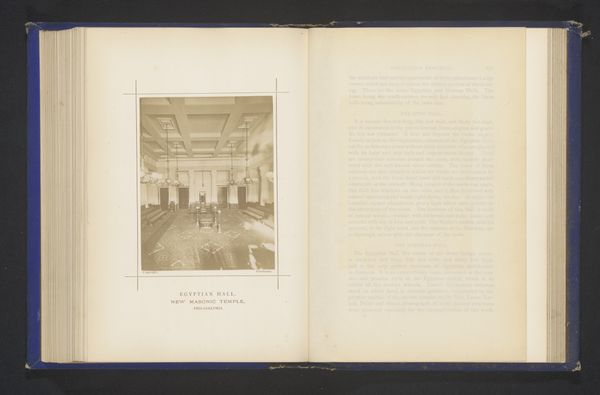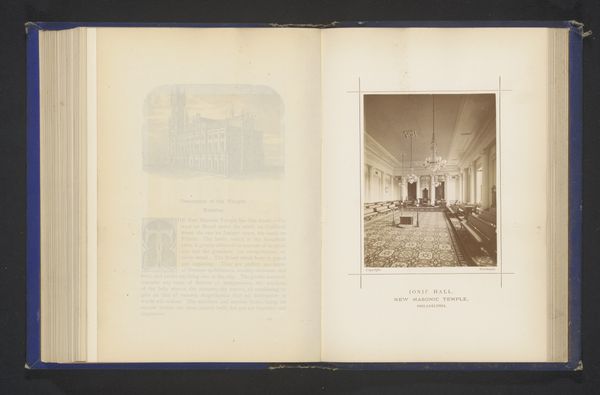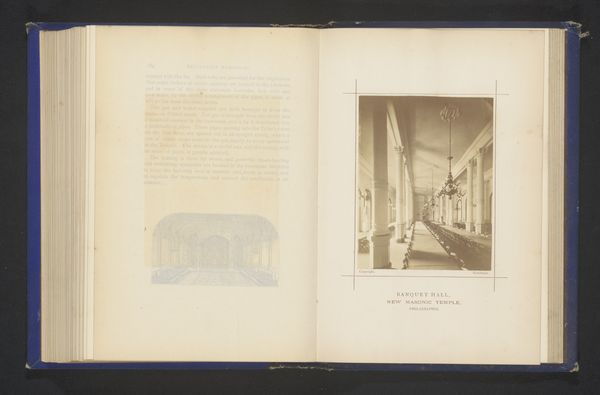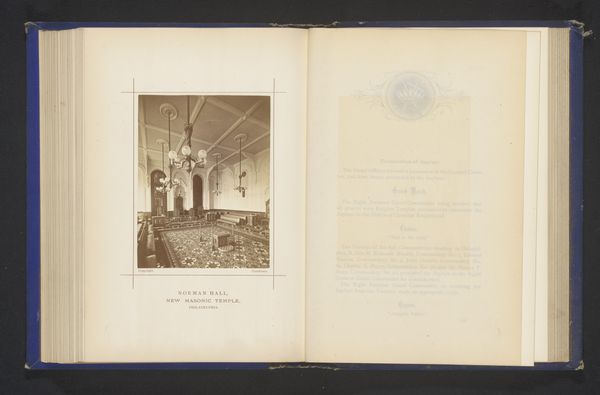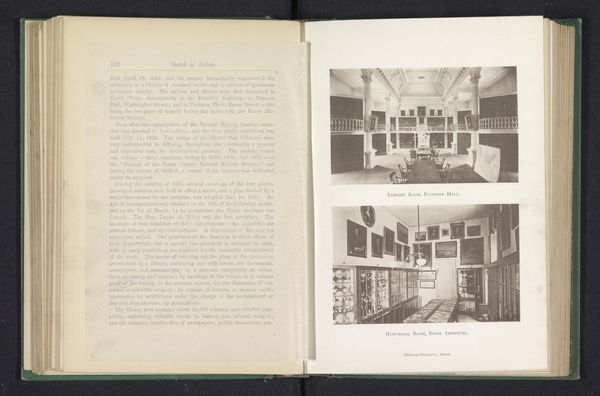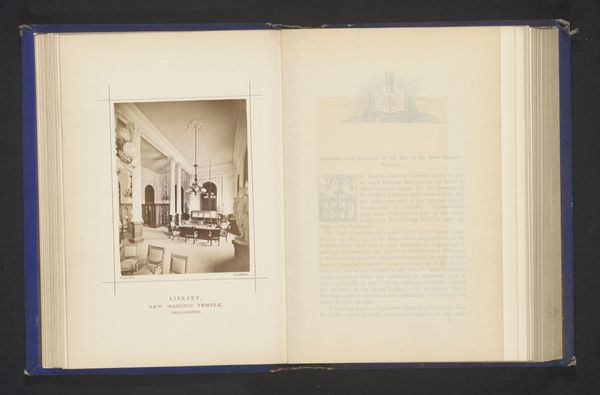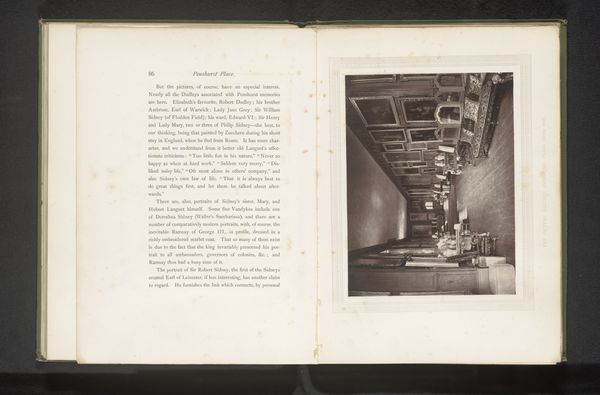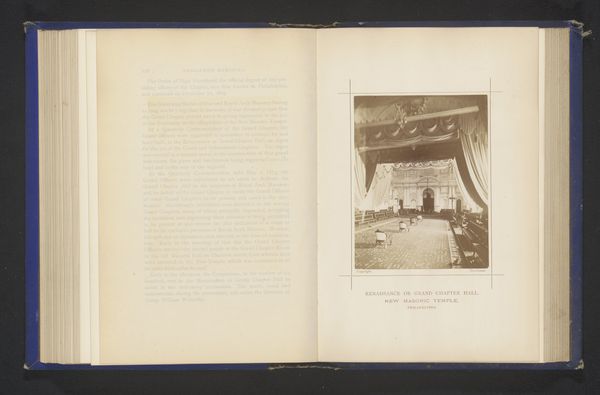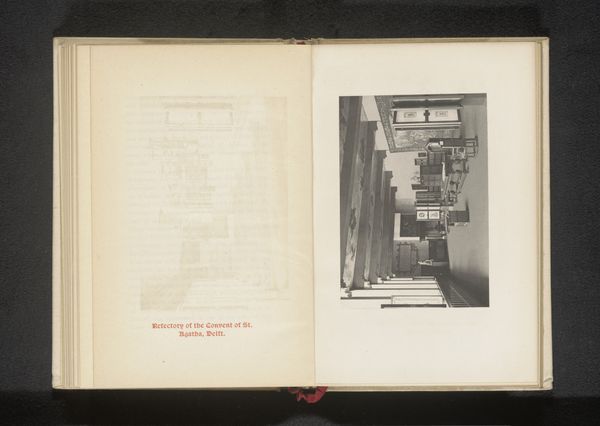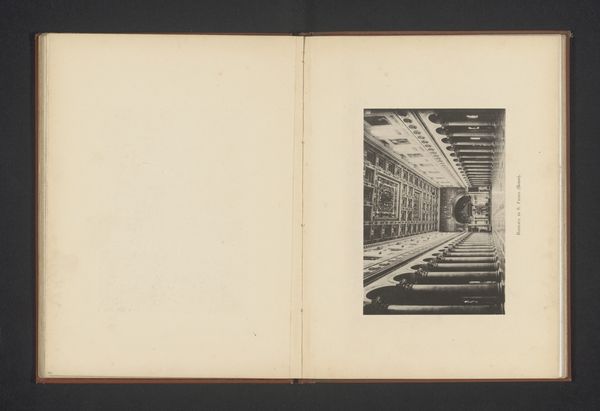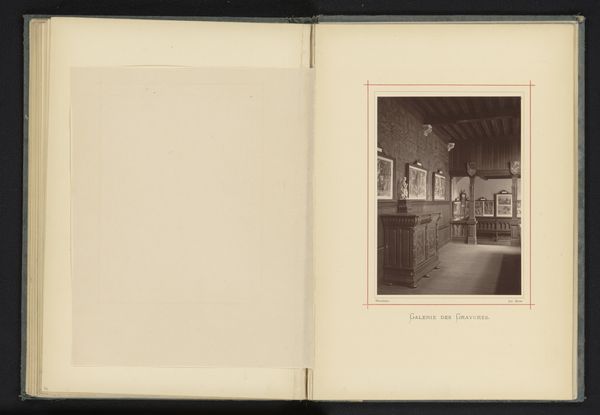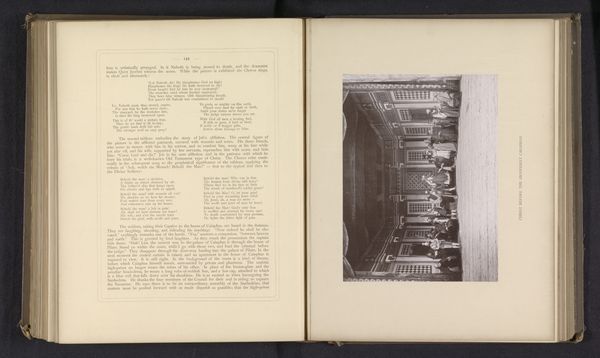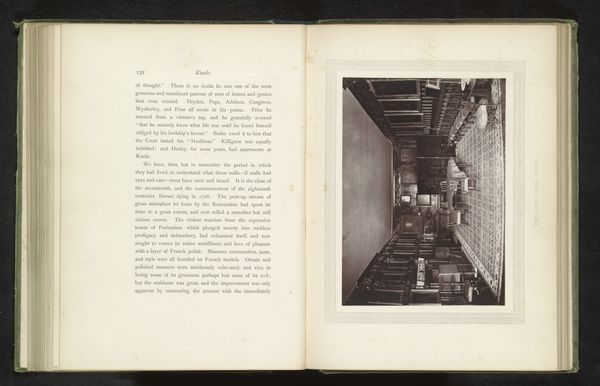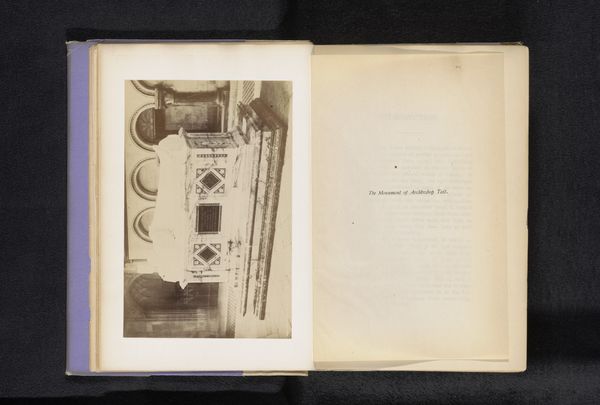
print, photography, albumen-print, architecture
#
aged paper
#
paperlike
# print
#
typeface
#
photography
#
fading type
#
stylized text
#
thick font
#
white font
#
handwritten font
#
thin font
#
albumen-print
#
architecture
#
small font
Dimensions: height 120 mm, width 92 mm
Copyright: Rijks Museum: Open Domain
Curator: Here, we see an albumen print titled "Interieur van de tempel van de vrijmetselarij te Philadelphia," which translates to "Interior of the Temple of Freemasonry in Philadelphia." Attributed to Frederick Gutekunst, this photograph offers a glimpse into the architecture and design of a Masonic temple sometime before 1874. Editor: Wow, talk about stepping back in time! It feels almost hushed, reverent, you know? Like if I listened hard enough, I could hear the echoes of secret rituals… and maybe some polite coughing. Seriously, though, that geometric carpet—is that a portal to another dimension or just a bold design choice? Curator: Let's consider the formal aspects. The linear perspective draws the eye directly to the back of the hall, emphasizing the symmetry and order inherent in the temple's architecture. Notice the calculated placement of the benches, their parallel lines contributing to the sense of organized space. The photograph itself is structured as a study in contrasts: light and shadow, ornate detail and simple lines. Editor: Organized, sure, but does organized equal welcoming? Those rows of benches look awfully rigid. And that cold, perfect symmetry… gives me the chills. Still, I can't help but appreciate the skill it must have taken to capture such a sharp image in those days. No filters, no Photoshop, just pure photographic alchemy! Curator: Indeed. The technical mastery is significant. Albumen prints, popular in the 19th century, were known for their sharp detail and tonal range. The fact that this image has survived remarkably well allows us to appreciate Gutekunst's attention to the materiality of the medium, the nuances of light, and the deliberate construction of depth. Editor: Construction is a great word for it. I keep thinking about what goes *into* constructing these spaces—literally, but also figuratively. It’s like a visual encoding, a recipe, a puzzle. So… if the Freemasons built this, and Gutekunst preserved it, what did they want us to *see*, to *understand*? Are those clues hidden in the typeface in the photograph, or am I just letting my imagination run wild? Curator: Your question points to the intriguing interplay of history, art, and symbolism that surrounds this image. Certainly, understanding the historical context of Freemasonry can shed light on the intended function and symbolic significance of this space. Editor: And isn't that the most exciting part? The layers of meaning, the untold stories whispered in the grain of the photograph. Frederick Gutekunst didn't just capture a room; he opened a doorway. Curator: A fascinating intersection between architecture, representation and belief.
Comments
No comments
Be the first to comment and join the conversation on the ultimate creative platform.
